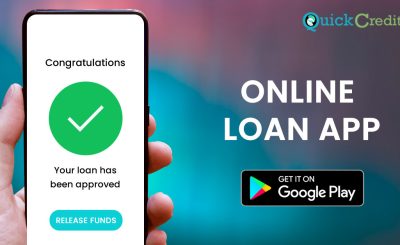Last Updated on March 16, 2025 by admin
Do you have bad credit and want to get a student loan? and you don’t know how to go about it. If yes you are in the right platform as We share how to get a student loan with bad credit right.
If you want to finance your education but have a bad credit history, you may struggle to qualify for student loans. Thousands of students face a similar situation every year, but they manage to get the loans they need to fund their education.
You could employ various methods to get a student loan, and even with a bad credit score, you can get the necessary funding for your education.
For students in the United States with bad credit or no credit history, federal student loans are often the best option. These loans, including Direct Subsidized and Unsubsidized Loans, do not require a credit check, making them accessible to a wide range of students.
If federal student loans do not cover all educational expenses, students may consider private student loans. Some private lenders, such as Ascent, Earnest, and College Ave, offer loans specifically designed for students with lower credit scores or no credit history.
These lenders may evaluate factors beyond credit scores, such as academic performance or future income potential. Having a cosigner with good credit can significantly improve approval odds and potentially secure better interest rates for private student loans
To apply for federal student loans, students must complete the Free Application for Federal Student Aid (FAFSA), which determines their eligibility for various types of federal financial aid, including grants, work-study, and loans. It is important to maximize federal student aid before considering private loans, as federal loans offer benefits such as low fixed interest rates and access to loan forgiveness programs
Read:List of Best Credit Cards for Bad Credit in USA
List of student loan with Bad Credit or No Credit
Getting a student loan with bad credit or no credit in the United States can be challenging, but it’s not impossible. Here are some options you can explore:
| Lender | Credit Requirement | Considerations |
|---|---|---|
| Federal Student Loans | No credit check | Complete FAFSA |
| Ascent | Low credit scores accepted | Academic performance |
| Earnest | Low credit scores accepted | Future income potential |
| College Ave | Low credit scores accepted | Cosigner option |
- Federal Student Loans:
Federal student loans are an excellent option for individuals with bad credit or no credit history, as most of these loans do not require a credit check.
This makes them accessible to a wide range of students, including those who might otherwise struggle to secure financing for their education.
The main types of federal student loans available are Direct Subsidized Loans and Direct Unsubsidized Loans, which are open to undergraduate, graduate, and professional students without the need for a credit check
Direct Subsidized Loans are specifically for undergraduate students who demonstrate financial need. These loans offer the benefit of the government paying the interest while the student is in school at least half-time, during the grace period, and during deferment periods.
On the other hand, Direct Unsubsidized Loans are available to both undergraduate and graduate students, and they do not require proof of financial need. However, the borrower is responsible for paying the interest during all periods.
For students with no credit history, federal student loans remain a viable option. The application process involves completing the Free Application for Federal Student Aid (FAFSA), which determines eligibility for these loans.
Since no credit check is required for most federal student loans, students can qualify regardless of their credit score or income. This accessibility makes federal loans a preferred choice for many students seeking to finance their education.
- Private Student Loans:
For students with bad credit or no credit history, obtaining private student loans can be challenging but not impossible. One of the most effective strategies is to apply with a creditworthy co-signer, which can significantly improve the chances of approval and secure better interest rates.
Some lenders also consider factors such as GPA, graduation date, and program when determining eligibility, which can be beneficial for students who excel academically. It is important to note that federal student loans should be prioritized, as they do not require a credit check and offer more favorable terms
In 2025, several private lenders offer options for students with bad credit. Ascent is notable for providing non-co-signed loans based on future earning potential, which can be advantageous for juniors and seniors.
Other lenders like Sallie Mae and College Ave offer co-signer options that can help lower interest rates.
Additionally, Earnest and MPower provide flexible repayment plans and discounts for automatic payments, making them attractive choices for students seeking manageable repayment terms
- Scholarships and Grants:
Students in the United States with no credit history can still access financial aid through various grants and scholarships.
The Free Application for Federal Student Aid (FAFSA) is a crucial step for students seeking federal grants, such as the Pell Grant, which do not require a credit check. Many states, including Wisconsin, offer need-based grants without formal credit checks, and students are encouraged to consult their university’s financial aid office for additional opportunities.
Private scholarships often focus on academic achievement or community service rather than credit history, making them accessible to students with bad or no credit
4. Work-Study Programs:
Work-study programs in the United States offer a valuable opportunity for students with bad credit or no credit history to finance their education. These programs are part of the federal financial aid system and are designed to provide part-time employment to students in need of financial assistance.
Importantly, eligibility for work-study is determined by financial need rather than credit history, making it accessible to a wide range of students. To apply, students must complete the Free Application for Federal Student Aid (FAFSA), which is a crucial step in securing work-study opportunities.
5 Online Colleges and Community Colleges:
Consider enrolling in an online college or a local community college. These institutions often have lower tuition costs, making it easier to afford without the need for large loans.
6. Income-Share Agreements (ISAs):
Some schools and private companies offer income-share agreements, which allow you to pay a percentage of your post-graduation income to cover tuition costs. ISAs do not depend on credit scores.
Remember to research and compare the terms and interest rates of any loans you consider. It’s essential to understand the long-term financial implications of taking out a loan, and to borrow only what is necessary to cover your educational expenses. Be diligent in filling out the FAFSA and exploring all available options for financial aid and student loans.
Read:What is good Credit score:How to get it and Factors that Affect Credit Scores
How to get approved for a student loan
Getting approved for a student loan involves meeting specific eligibility requirements and preparing the necessary documentation. For federal student loans, you must demonstrate financial need, be a U.S. citizen or eligible noncitizen, and have a valid Social Security number.
Additionally, you need to be enrolled or accepted for enrollment in an eligible degree or certificate program and maintain satisfactory academic progress. Completing the Free Application for Federal Student Aid (FAFSA) is a crucial step in this process, as it helps determine your eligibility for need-based aid
When applying for a student loan, it is essential to gather and submit various documents. For federal loans, you will need to provide your Social Security number, tax returns, and current account balances.
The FAFSA form requires much of this information, and it is important to have these documents ready to streamline the application process. For private student loans, additional documentation such as proof of income, employment details, and cosigner information may be required by lenders
Federal Student Loans:
- Complete the FAFSA: The Free Application for Federal Student Aid (FAFSA) is the first step for any student seeking financial aid. It determines your eligibility for federal grants, work-study, and loans.
- Meet Eligibility Requirements:
- Be a U.S. citizen or eligible noncitizen.
- Have a valid Social Security number.
- Be enrolled (or accepted for enrollment) in an eligible degree or certificate program at least half-time.
- Maintain satisfactory academic progress.
- For male students aged 18-25, register with Selective Service.
- Types of Federal Loans:
- Direct Subsidized Loans: These are need-based loans where the government pays the interest while you’re in school and during deferment periods.
- Direct Unsubsidized Loans: These are not need-based, and interest accrues while you’re in school.
- Direct PLUS Loans: These are available to graduate students and parents of undergraduate students. A credit check is required, but it’s less stringent than for private loans.
Private Student Loans:
For private student loans, eligibility requirements vary by lender but typically include being enrolled at least half-time in an eligible school and meeting credit and income criteria. If you have a limited credit history, applying with a creditworthy cosigner can improve your chances of approval. It is important to check specific requirements with your school’s financial aid office or the lender you are considering to ensure you meet all necessary criteria
- Private lenders will conduct a credit check. A good credit history or a creditworthy cosigner will increase your chances of approval and help you secure a lower interest rate.
- Compare loan offers from different lenders to find the best interest rates, repayment terms, and benefits.
- Gather the necessary information (income, employment, school details) and complete the lender’s application.
- Be prepared to provide proof of income, enrollment, and other documentation as required by the lender.
Read:What is considered as good and Bad credit score
How to Improve Credit Score As a Student
Improving a credit score as a student involves understanding the factors that influence credit scores and adopting responsible financial habits. One of the most important steps is to obtain a student credit card, which helps in building a credit history.
It is crucial to make on-time payments, as payment history is the most influential factor in credit scoring. Additionally, students should regularly check and update their personal information to avoid inaccuracies that could negatively impact their score
Students should avoid common mistakes that can harm their credit scores. These include missing payments, taking on unnecessary credit, and closing old credit card accounts.
It is also important to avoid using credit to fund their lifestyle, as this can lead to debt. Keeping personal information up-to-date and registering to vote can also help improve credit scores. By steering clear of these pitfalls, students can maintain a good credit score.
| Strategy | Description |
|---|---|
| Obtain a Student Credit Card | Helps build credit history and establish positive financial habits. |
| Make On-Time Payments | Payment history is crucial for credit scores. |
| Check Personal Information | Regularly update to avoid inaccuracies. |
| Avoid Common Mistakes | Such as missing payments and taking on unnecessary credit. |
| Become an Authorized User | Benefit from a parent’s credit history. |
| Use Experian Boost | Get credit for paying rent and utility bills. |
How to Improve Credit Score As a Student
Conclusion:
Deciding whether to take out student loans is a personal decision that should be made carefully. Weigh the potential benefits and drawbacks based on your individual circumstances and financial goals.
Consider alternative options like scholarships, grants, and work-study programs before resorting to loans. If you do decide to borrow, borrow only what you need, choose the right type of loan, and create a repayment plan that works for your budget
















